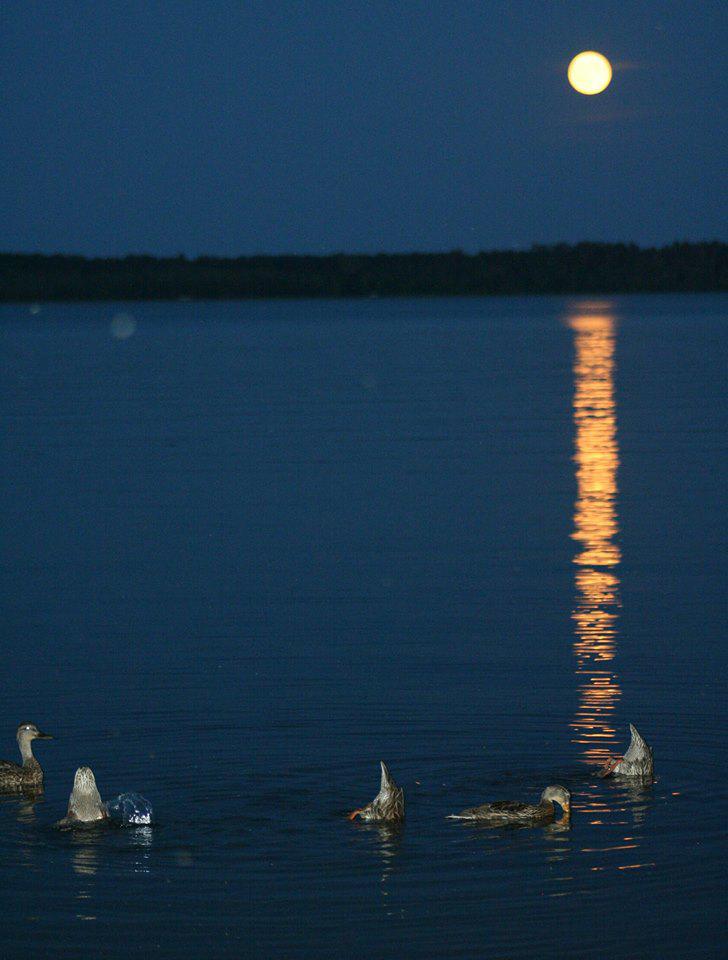I went to the lake
To drown all the poems
I had written for him.
The unblinking moon
Looked at me with eyes open wide.
Like mystic Rumi, plunged in thoughts,
Sensations sublime all dead
And not a memory left,
I looked at the ripples
Moving with grace of the peacocks.
They refused to wet the poems
And allow the ink to blend
In the waters crystal clear.
I showed my broken wings of love
And they cried with me.
Finally, I immersed the poems
And saw them swimming like ducks
In the beautiful lake, the ink untouched.
The next day, I went to look for my poems.
To my surprise, I saw the lake frozen.
I cried like a child.
 Ducks, Moon, Lake Bemidji -- Angie Nistler
Ducks, Moon, Lake Bemidji -- Angie Nistler
Bemidji is a glacially-formed lake in northern Minnesota, US. Located less than 50 mi (80 km) downstream from the source of the Mississippi river, it both receives and is drained by the Mississippi. For that reason the Ojibwe called it, along with nearby Lake Irving, "Bemijigamaag-zaaga'igan" (Traversing Lake) since they regarded them as traversing the river. More recently they were regarded as being formed by Paul Bunyan's footprints. In 1904 The "Duluth News Tribune" reported on tall tales that were circulating among local loggers, especially concerning "the year Paul Bunyan lumbered in North Dakota" which was known as the year of the "blue snow." Six years later J. E. Rockwell described Bunyan as a giant and introduced his pet blue ox. K. Bernice Stewart and William B. Laughead conducted field research among the lumberjacks. In 1916 Stewart and her University of Wisconsin teacher Homer A. Watt presented her findings in "Transactions of the Wisconsin Academy of Sciences, Arts and Letters" (they described Bunyan as "a powerful giant, seven feet tall and with a stride of seven feet"), while Laughead converted his study into a series of promotional pamphlets for the Red River Lumber Company which established the character as a major figure in American folklore, named the blue ox "Babe," and gave Bunyan his gigantic height. (Mainly because most of the Bunyan tales have been aimed at juvenile audiences, in 1950 Richard M. Dorson belittled the phenomenon as "fakelore," a commercial literary invention passed off as traditional folklore, and specifically called Bunyan a "pseudo folk hero of twentieth-century mass culture.")
ReplyDelete.)